L’Osier has been open in the Ginza since 1973, owned by a cosmetics company called Shiseido. It was awarded three stars in the inaugural Michelin Tokyo guide under its head chef Bruno Ménard, but was forced to close in 2010 when its building underwent a three year refurbishment. Now set in a dedicated two story building, Osier reopened in 2013 with a new chef, Olivier Chaignon. Mr Chaignon had worked at Taillevent and more recently was head chef at Pierre Gagnaire in Tokyo before moving here. As well as regaining its third Michelin star in 2019, the restaurant won the Tabelog silver award in 2019 and 2018 after getting a bronze award in 2017.
There is a waiting area at street level decorated with a spectacular glass screen in the shape of a champagne bubble at ground level, and the dining room itself is in the basement. The room is circular, carpeted and with large and widely spread tables. There were two tasting menu choices at ¥22,000 (£165) and ¥32,000 (£241) and a surprise menu at ¥38,000 (£286) as well as a full a la carte selection.
The wine list ranged from ¥6,000 (£45) up to ¥570,000 (£4,279) in price for the Petrus 1989 (which was actually well below its current market value of ¥964,000), with the list mostly but not exclusively French. There was even a pleasant Japanese white wine called Grace Toriibira Private Reserve Koshu 2017 at ¥8,800 (£66) compared to a shop price of £44. There were labels such as Vina Tondonia Reserva 2006 at ¥13,000 for a bottle that you can find in the high street for ¥4,133, Louis Jadot Puligny Montrachet Les Referts 2013 at ¥19,000 compared to its retail price of ¥9,220, and Guigal Chateau d’Ampuis 2011 at ¥29,000 for a wine that will set you back ¥12,876 in a shop. For those with the means, there were grander offerings such as Guigal La Mouline 2000 at ¥79,800 compared to its retail price of ¥36,054, and Mouton Rothschild 1982 at ¥360,000 for a wine whose current market value is ¥179,947. A separate list of Romanee Conti was available on request, presumably because it was hard to fit the number of zeroes on the price in yen for these wines on the main list.
The meal began with a plate of canapés. There was a ginger biscuit flavoured with carrot, a gently spiced tart with scallop mousse, a herb ball on a cheese biscuit base and a foie gras mousse tartlet. These were classy nibbles, the pastry very delicate and the flavours clear and distinct (19/20). This was followed by a cold autumn vegetable soup/jelly with Jerusalem artichokes, caramelised chestnuts, Japanese pear and topped with parsnip ice cream. This may not sound obviously appealing but was actually very impressive, the vegetables of exceptional quality and the acidity of the pear cutting through the richness, with the chestnuts providing an interesting textural contrast (19/20). Bread was supplied from a bakery called Maison Kayser, a local outpost of an award winning Paris bakery. The breads that I tried, especially an olive bread, were top notch.
Kegani crab (hairy crab in English) from Hokkaido was served with fennel as well as fennel ice cream, crustacean custard, acidulated red turnips, crab bavarois and a tomato jus. The crab had superbly delicate flavour with lovely natural sweetness and the fennel was of exceptional quality, with the tomato jus having remarkable intensity of flavour. This was an impressive dish (19/20). I next tried a prettily presented dish of seasonal vegetables with langoustine. The vegetables were prepared in a variety of ways, with some being grilled, such as aubergine, some being marinated and some raw, along with salad leaves. The langoustines, originally from New Zealand, were rolled in slices of courgette and served alongside red pepper mousse and green tea oil from Uji, south of Kyoto. The vegetables were of uniformly high quality, and the langoustine tails had excellent natural sweetness, their delicate flavour working well with the vegetables (18/20).
Chicken breast was steamed and served with grilled asparagus, girolle mushrooms from France, caramelised onion sauce and a garnish of Australian truffle. The chicken leg meat was combined with foie gras and made into a ballotine. The chicken itself was a breed known as black chicken and was from Kyoto, having a delicate flavour reminiscent of Bresse chicken. All the elements were cooked beautifully, the ballotine having silky texture, its richness nicely contrasting with the subdued flavour of the steamed chicken breast (18/20).
The star dish of the meal was amadai (tilefish) caught in the Japan Sea, a fish with a delicate, slightly sweet flavour - indeed in Japan it is also known as “sweet sea bream”. The fish was served with crispy scales and came with sweet onions stuffed with onion, ginger and crustacean mousse, grilled morning glory and a deeply reduced crustacean sauce flavoured with ginger, along with a few tiny squares of ginger marinated in red wine vinegar. This was an extraordinary dish, the fish wonderfully delicate with gorgeous flavour, the little crisp fish scales ethereally light and the sauce intensely flavoured and redolent of aromatic ginger. The vegetables were perfectly cooked and the ginger had remarkable flavour, beautifully lifting the flavour of the rich sauce and contrasting with the delicate flavour of the amadai. This was one of the best fish dishes I have ever eaten (a mere 20/20 score barely does it justice).
The cheese selection was mostly French, but with some additions from elsewhere such as aged Gouda and a blue cheese from Nagano in central Japan. I was very impressed with how well the cheeses had been kept here, everything served in peak condition. St Maure de Touraine can easily become chalky but here was perfectly ripe, as was Brillat Savarin, Comte and Munster.
Pre dessert was mulberry sherbet with cream cheese mousse with blackcurrants, a light and refreshing transition to the sweets (18/20). Crepe Suzette is a gloriously old-fashioned dish, made tableside with plenty of theatricality. Our waiter drizzled Grand Marnier through a peeled orange into a sauce of caramelised sugar, butter and orange juice before being flambéed. The pancakes were very light and delicate and the sauce nicely balanced, with excellent vanilla ice cream on the side (19/20). A variation on lemon tart was a lemon meringue with white chocolate cream, yuzu jelly and an orange and tequila sorbet. This was gorgeous, the citrus elements balancing the white chocolate really well, the meringue as light as a cloud (19/20). An unusually attractively presented rum baba had a sponge cake topped with rose flavoured whipped cream surrounded by a ring of raspberries along with lychee sorbet and raspberry sorbet. This was terrific, the baba having great texture and being beautifully moist, the raspberries having exceptional flavour (20/20).
To finish there was an impressive trolley of mignardise, with a whole array of cakes, chocolates, pastries and other little delights. Coffee was Musetti Paradiso, a coffee that is only 70% arabica and which was barely drinkable. This was the one off-note of the meal given the general emphasis on top notch ingredients here. Tokyo has plenty of high-end coffee shops these days so surely a restaurant of this calibre should be serving high grade speciality coffee?
Service was absolutely superb, the staff attentive, knowledgeable and helpful. The bill came to ¥45,584 (£343) with several glasses of good wine. If you shared a modest bottle of wine then a typical cost per person might be around £240. Although this is not cheap it is barely half the cost of a meal at a typical Parisian three star restaurant these days. This was a thoroughly enjoyable meal, with top notch ingredients, fine culinary technique and charming service. The amadai dish in particular was really memorable. This is a proper three star Michelin restaurant.

























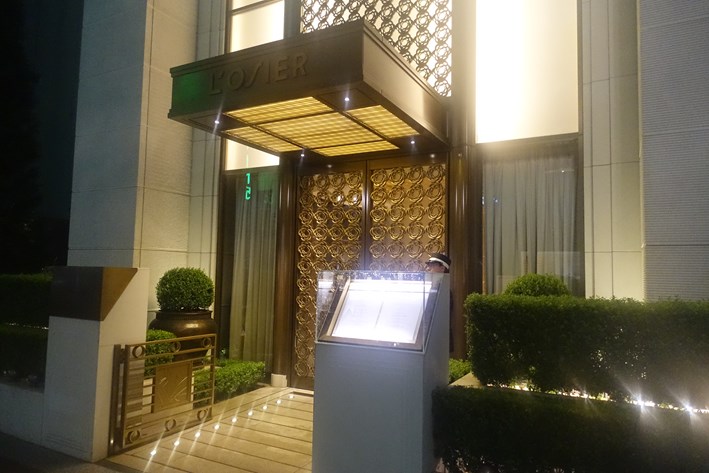



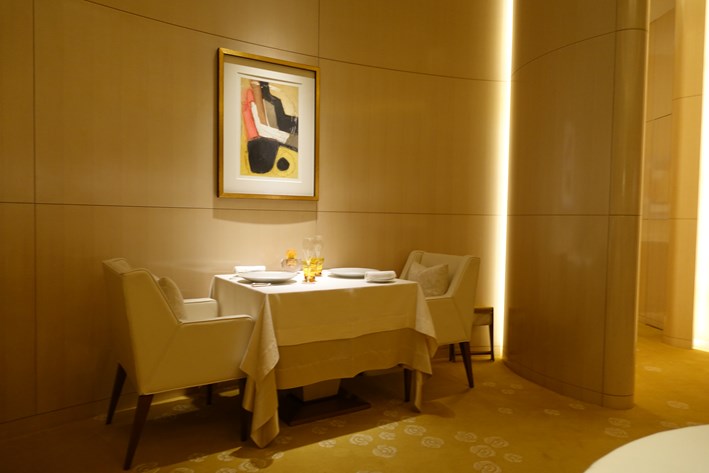
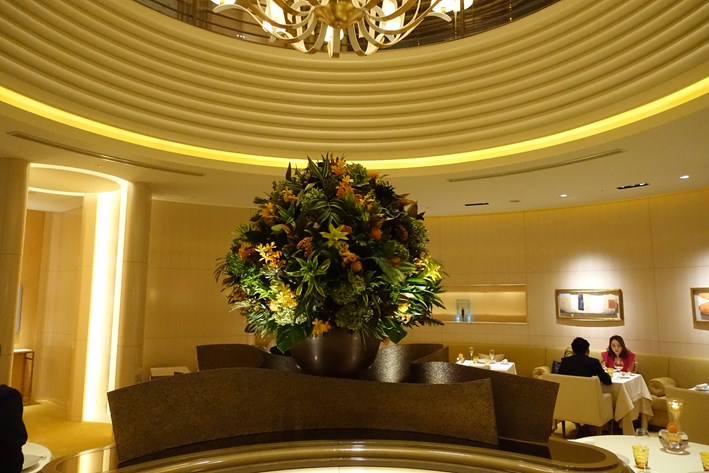
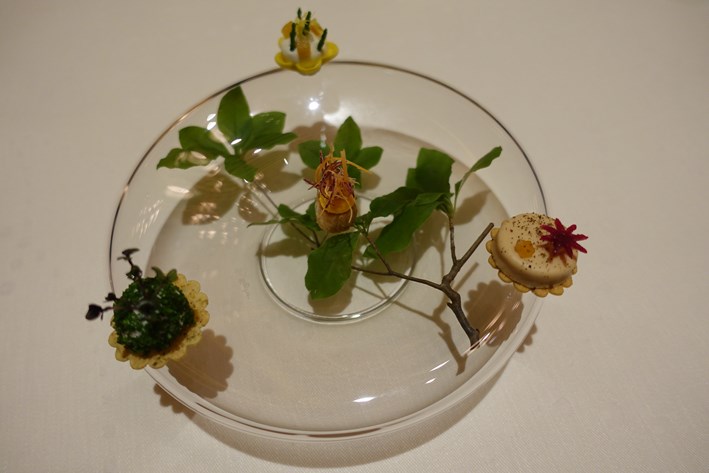
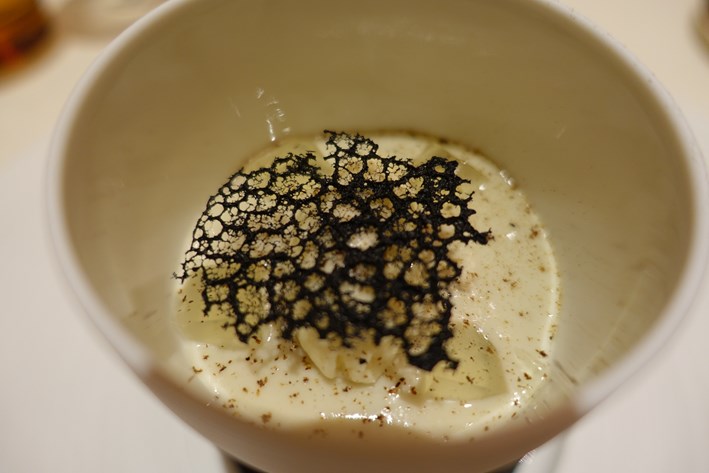
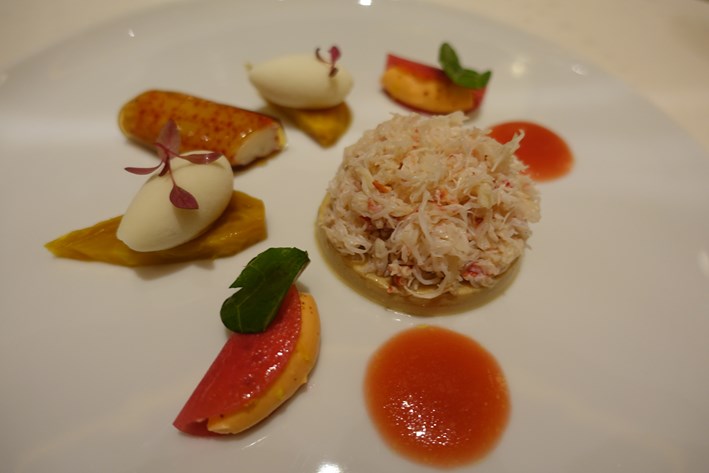
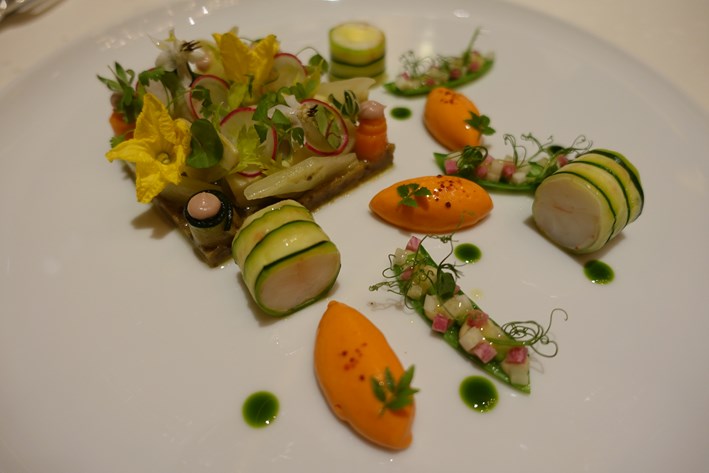
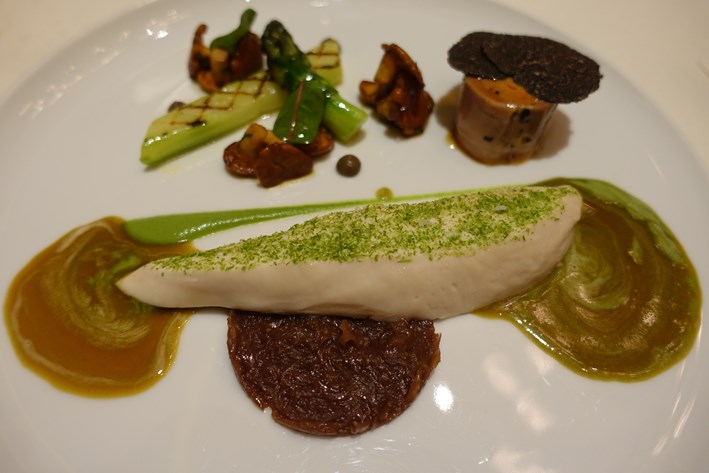


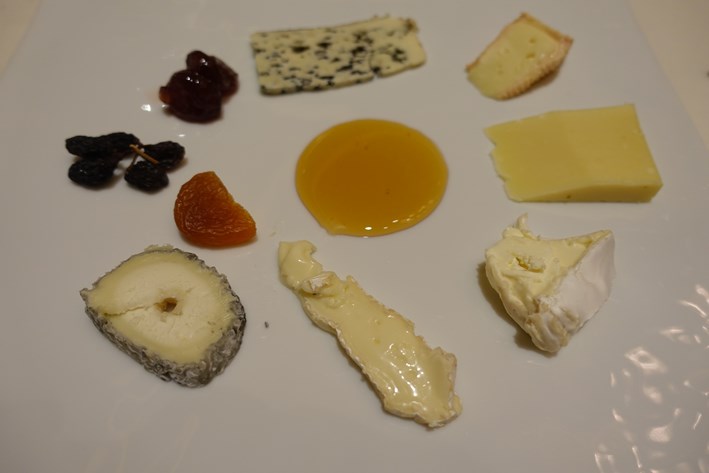


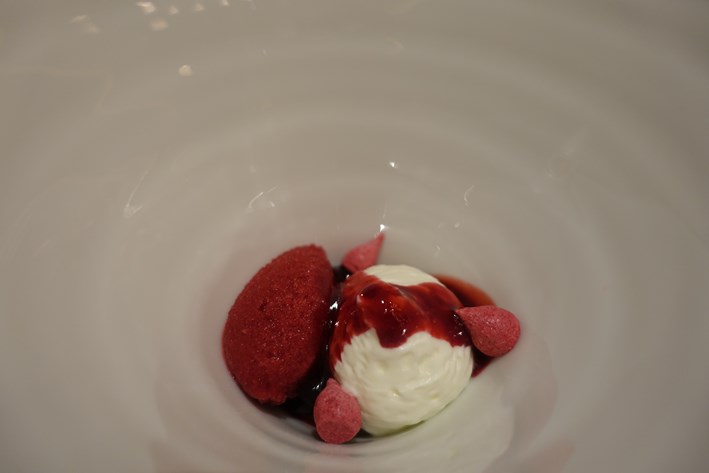
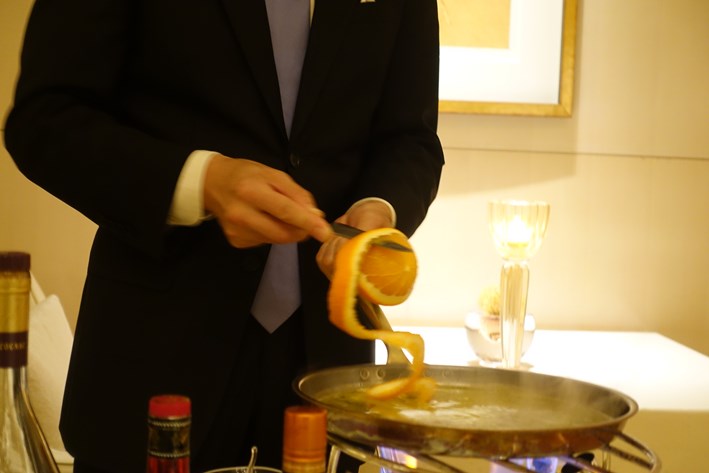
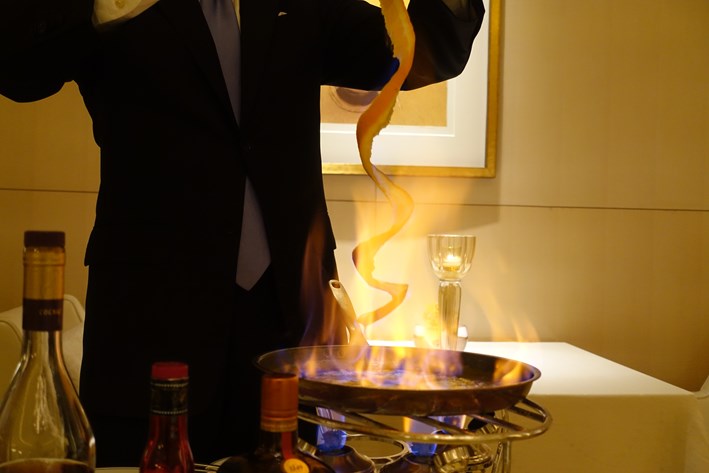
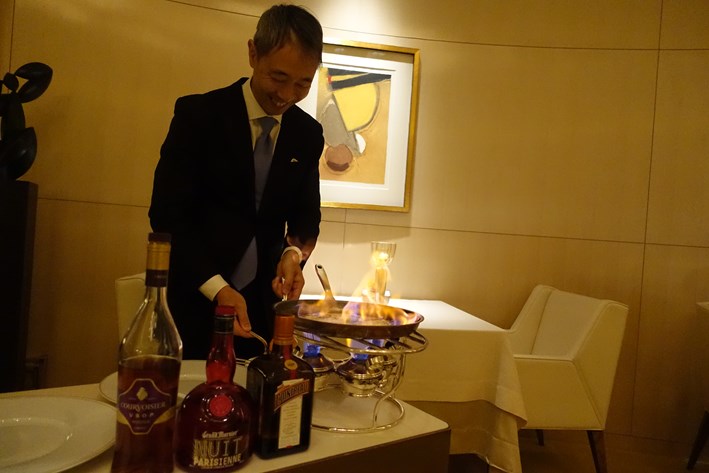
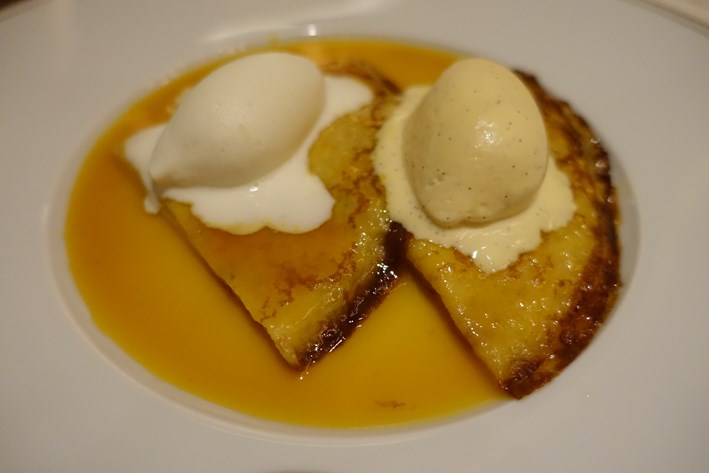

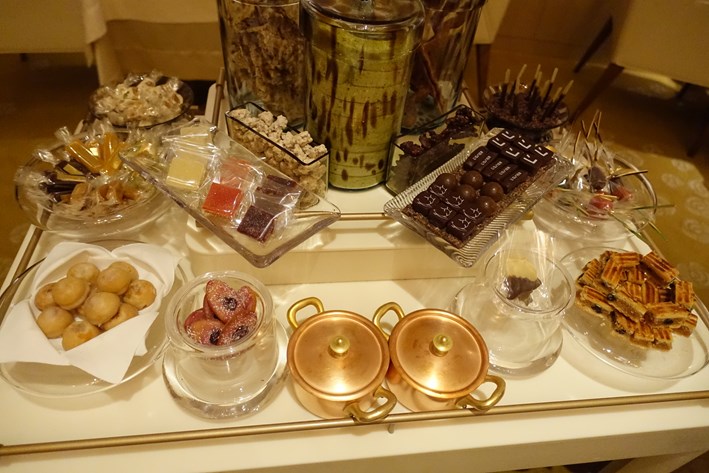


Add a comment
Thank you for submitting your comment, this will be checked and added to the website very soon.
User comments